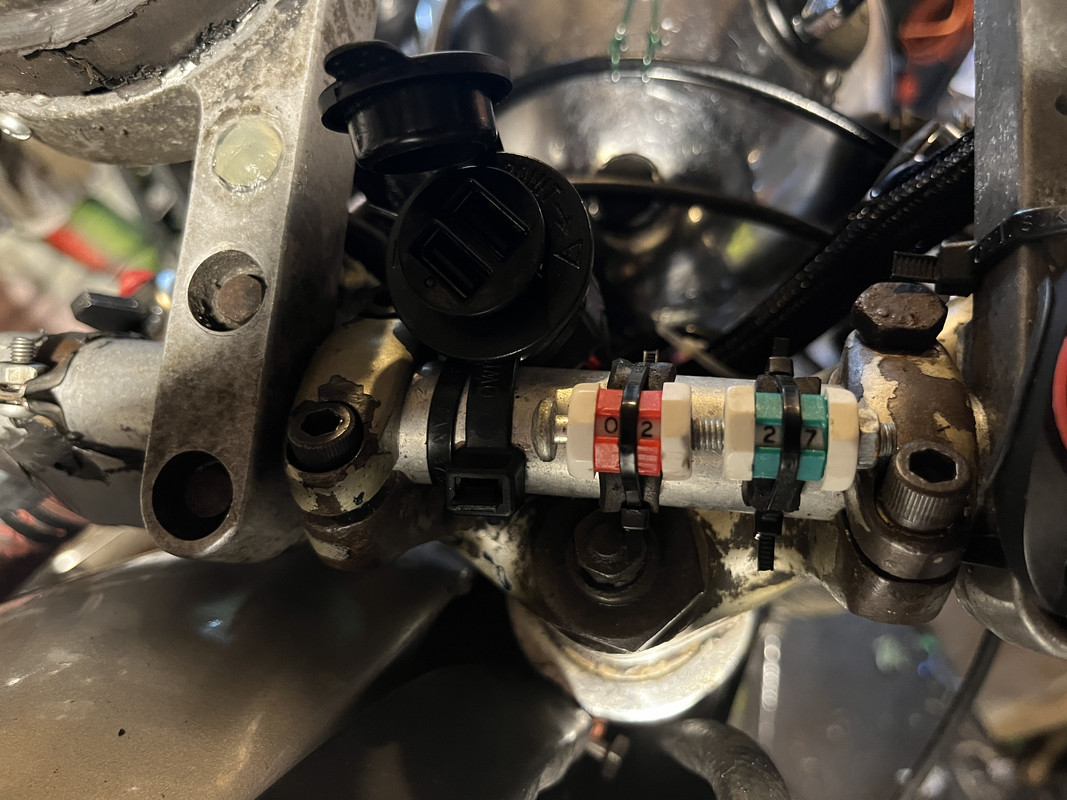I agree with kommando
I have the original camshaft timed breather
And a reed valve on the plate where the aborted starter motor should sit on the back of the timing cover
I use a 125 Yamaha so called (egr valve) with half the housing removed
I don't have any extra holes drilled from the inner timing cover into the crankcase
It works well for me,it's teed to the camshaft rotary breather then into the oil tank
It returns a lot of oil to the tank and never emulsifies
I have a 70 commando with a similar timing side reed breather. I've owned it for 48 years...
Here's the evolution:
First all I had was the stock camshaft rotating disk breather - The biked leaked oil as was standard back in the day, so clearly the stock disk breather was insufficient or the bike wouldn't leak
Some years later, I did the timing side plate breather mod - I drilled 2 holes from the timing side cavity into the crankcase. A 3/8" diameter hole between the cast webbing up high for air to travel out of the crankcase and a 1/4" hole under the oil pump boss to lower the oil level in the timing side cavity, so the other holes would be free to pass air into the timing chest. I added a "mike's XS" style breather on the blanking plate on the timing side to meter the air pulses. I used the stock breather and the timing side modification together for many years. I still occasionally got a little weep of oil at the tachometer drive port.
A few years ago, I added the Jim Schmidt reed breather on top of the camshaft disk port breather. I think it helped make the port breather more efficient at sealing off return air on the piston upstrokes so I no longer got any weeping at the tachometer drive port.
Last season I decided I was going to drill a 1/4" hole right down the middle of the disks while they were in place on the bike.... mostly because people said NOT to do it... I pumped the end of the port full of automotive grease to catch chips, and made a threaded centering device on the lathe to screw into the port and center the 1/4" bit. I bought 4 brand new bits, because you don't want to have any powdering or flaking when you drill. You want curls only as you drill so you can collect them as they are generated by drilling. I drilled the disks, vacuumed out the grease and chips, the followed up with many passes with a rare earth magnet on a stalk to pick up any chips that the grease didn't capture. The magnet did pick up a chip or two, so clearly the grease didn't contain all the chips, so clearly there are safer ways to do this.. but what's done is done as they say.
If you look at the camshaft breather design, the camshaft is hollow and has a wheel shaped part of the casting in the center that has 4 1/8" holes drilled to draw air into the camshaft to go out the port. I think that is one of the inherent weaknesses of using that port as far as pushing a volume of air and the rotating disk doesn't seal as well as a reed valve, so I think the results of only using the timed breather port is the weakest design... and there's certainly better performing options now... those being, going weakest to best performing:
1)Crankcase sump drain plug breathers- Jim Schmidt now makes one to fit the early bikes as Pete mentioned already. The original Comstock design hit against the cross member of early frame bikes*
2) Double breathers Jim Schmidt camshaft breather and timing side breather modification used together
3) Timing side modification and stock rotary disk breather together
4)Timing side modification
5)Jim Schmidt camshaft breather on the camshaft port alone with removed disk port mechanism
6)Jim Schmidt camshaft breather with the disk mechanism left in place. *I think it improves the efficiency of the port seal to resist backward flow of air on the upstroke.
7)The stock rotating camshaft disk system which as Kommando said, works a little bit, but doesn't seal well or have the capacity to remove the volume of air at high rpms...
this is just my opinion..... and not written in stone as fact..

